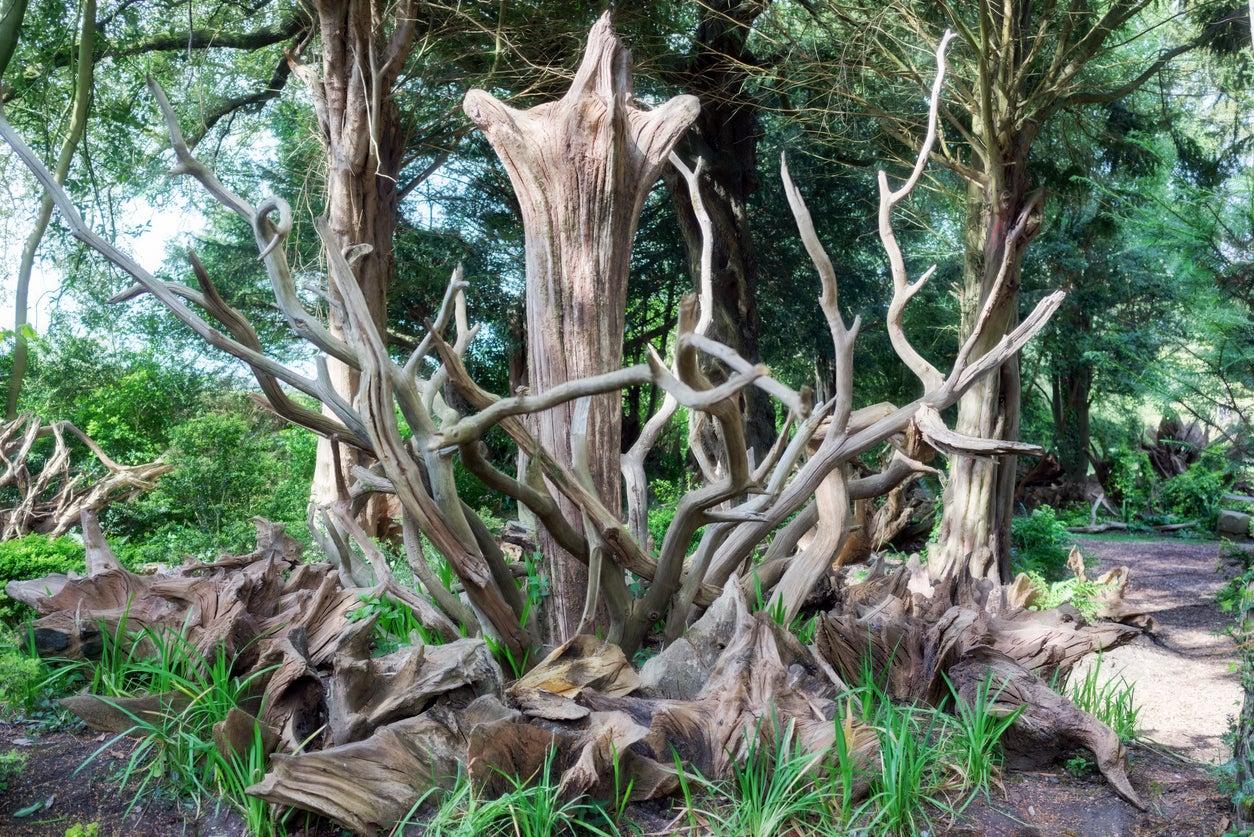What Is A Stumpery Garden – Stumpery Ideas For The Landscape


Hugelkulture isn't the only way to use logs and stumps. A stumpery provides interest, habitat, and a low maintenance landscape that is appealing to nature lovers. What is a stumpery? A stumpery garden is a permanent feature which, when constructed properly, will resemble the fallen logs, moss, and lichen and ferns of a wild rainforest. There are big and small stumpery ideas. You don't have to have a lot of land to make a smaller stumpery and watch the wildlife come while you enjoy the natural appeal of this feature.
What is a Stumpery?
Stumperies take advantage of the ease with which downed trees shelter animals and provide nutrition for new plants. The appeal is also visual, with a finished stumpery garden appearing to blend into surrounding woodlands. Making this type of garden area takes a little time and patience for everything to settle and take root, but it’s well worth the effort and what doesn't take a little time? A stumpery is a planned area which incorporates logs, stumps, root wads, bark, and other common sights of a forest floor. It may also include castoffs, like railway ties, or found objects, like driftwood. The idea is to keep it naturally cluttered with items of interest. Once established, the area will be a magnet for insects and animals, and it will slowly compost, enriching and loosening the soil. The wood is arranged with an artistic eye, where some gardeners create fun tunnels, walls, and even arbors. Think of a hobbit strolling through the elven woodland Lothlorien, and you get the idea. Add special touches to personalize the space like pathways, statues, and, of course, plants.
Using Stumpery in Gardens
Most stumpery ideas are for a large space, but you can use the concept in a small area, too. One of the simplest ways of using stumpery in gardens is to make a stump planter. Carve out the inside, leaving a wall around to contain soil, and drill drainage holes in the bottom of your stump. Add organic matter, like compost, and plant ferns or other moisture loving plants. The stump will stay wetter than a glazed pot, and you can encourage moss to grow on it by painting it with yogurt or a moss slurry. Once established, the effect is quite charming and has fairyland appeal. Other ideas may be as simple as using a root wad for vertical interest in the garden, or creating walls or entire areas made up of wild wood material inter-planted with forest plants and flowers.
How to Make a Stumpery
The first step is to clear the area you intend to design. Secondly, you need to find the plant material. This may be as simple as walking a beach to gather driftwood, or as complex as hiring a crew with a flatbed truck and winch to bring in huge old snags and root masses. Next, prepare the area by weeding and adding pine needle mulch or compost. The fun part is laying out the logs and other materials. If you are using large pieces, I recommend doing a plan on paper so the items don't need to be moved more than once. Fill in around stumps and logs with more compost and plant. With a little water, in time, the place will be lush with ferns and other plants. Using stumpery in gardens is a great way to turn eyesore stumps and downed wood into an artistic, wild landscape.
Sign up for the Gardening Know How newsletter today and receive a free copy of our e-book "How to Grow Delicious Tomatoes".

Bonnie Grant is a professional landscaper with a Certification in Urban Gardening. She has been gardening and writing for 15 years. A former professional chef, she has a passion for edible landscaping.